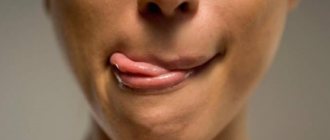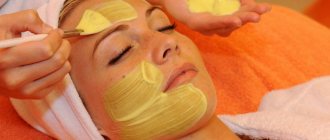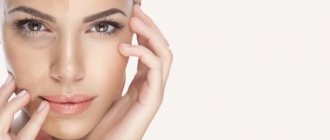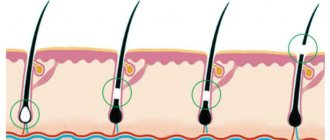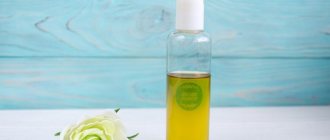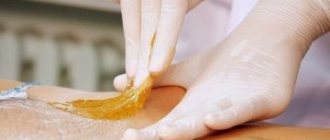Sugar depilation, as a simple, affordable and effective method of removing unwanted hair on the body and face, with its centuries-old history remains a popular cosmetic procedure. The method is based on the use of the adhesive properties of a viscous sugar mass, which is called a paste. Hairs immersed in the composition can be easily removed entirely along with the root. Among the wide range of caramels, it is not easy to determine which sugaring paste is best. It is especially difficult to choose caramel for beginners who have no experience in handling the composition.
Composition and specificity of the paste
The mechanism of operation of the sweet paste is that the sugar composition, when applied, envelops each hair and, when removed, is removed along with unnecessary “vegetation.” To achieve a consistency that can cope with such a task, the composition of the plastic mass certainly contains:
- sugar is the main ingredient that ensures the “stickiness” of the paste (honey, fructose, and glucose can be added as an alternative);
- water - needed in small quantities to dissolve the sweet component at the initial stage of production (can be replaced with herbal decoction);
- acid - needed to obtain a more viscous, plastic mass (most often lemon juice, citric acid or vinegar is used).
Sugar is the main component of most homemade pastes; in industrial production, this ingredient is usually replaced by fructose and sucrose
Essential oils and herbal extracts can be used as additional components, and preservatives and flavorings are often added to industrial formulations.
It’s great if the caramel contains walnut extract. This component is known to slow down hair growth.
What happens to hair and follicles during the procedure
A dense layer of sugar paste, when applied to the skin, completely envelops the regrown hairs. When you tear it off with a sharp movement, the hairs are removed from the roots - those that were in the growth stage (anagen) at the time of the procedure. On average, a woman has two-thirds of her hair in the active phase, the rest naturally dies and falls out. Because the hair is removed from the roots, the follicles are not destroyed, so new hairs will grow, but much more slowly.
To capture all the hairs in the problem area, the paste is applied against their growth and torn off in the direction of growth.
Sugaring is repeated after one and a half to two months, the hairs become noticeably smaller and their structure is softer and thinner. Along with a layer of sugar paste, dead epidermal cells are removed, the skin becomes soft, and new hairs easily grow upward.
Varieties
Sugaring paste can be purchased at the store or made at home. Another classification divides the product by degree of hardness (density).
Density degree
Based on the degree of density, pastes are divided into 3 types:
- soft - tender and elastic, the consistency resembles liquid honey;
- middle - “intermediate link”, which has universal properties;
- hard - the most dense, elastic, viscous, viscous, crumples in your hands.
The table below reflects the specifics of each of them.
Table - features of pastes of different degrees of hardness
| Variety | Hairs | Technique | Working conditions |
| Soft | Soft, light, thin, sparse |
|
|
| Average | Soft and moderately hard, not too short |
|
|
| Hard | Thick, hard, dark, short | Manual |
|
With the manual technique, the composition is applied and removed with your fingers, with the spatula - using a spatula, with the bandage technique, the paste is applied with a spatula or using special cassettes (very convenient for beginners), then covered with a special fabric strip, along with which it is removed.
Most manufacturers of professional products offer a wider range of sugaring compositions. The product line may also contain ultra-soft and ultra-hard pastes.
The soft paste is applied with a spatula or using a special cassette
For home use, experts recommend purchasing a paste of medium hardness, as the most versatile option; in addition, the use of hard and soft compositions requires a certain skill. Professionals, as a rule, have several varieties of caramels at their disposal, which makes it possible to take into account all factors in their work at once. If necessary, pastes of different densities are mixed to obtain the ideal consistency.
Preparation method
Some people prefer to cook pasta themselves, while others prefer to buy it from a specialty store. Are there significant differences between a commercially produced product and a home-produced product?
Homemade
You can prepare a sugaring paste at home, however, in order for the result to meet your expectations, you must adhere to the proportions recommended in the recipe and carefully monitor the process: if the composition is overcooked or undercooked, it will turn out to be unsuitable for use due to excessive stickiness or, conversely, hardness.
There are many recipes for homemade sugar paste, as an example - the 2 most common:
- Mix 2 cups of granulated sugar with water and fresh lemon juice (a quarter cup of each component), over low heat, stirring continuously, heat the mixture to 120 °C (use a cooking thermometer to determine the temperature). Remove from the stove, cool slightly and transfer to a convenient container with a lid for storage.
- Add a quarter glass of honey and half a glass of fresh lemon juice to a glass of granulated sugar. Heat the mixture in the microwave for 2 minutes, setting the temperature to maximum. Take out the mixture, mix and repeat heating.
Honey is often added to homemade pastes: this ingredient has a beneficial effect on the skin, but can provoke allergic reactions.
The prepared sugar paste should cool for 1.5–2 hours. Only after this the composition can be used.
Video: homemade caramel recipe for sugaring
Purchased
The process of making store-bought pastes remains behind the scenes; the table below reflects the characteristics of the most popular compositions for sugar hair removal.
Table - overview of popular products
| Name | Main components | Peculiarities | Approximate cost per 1 kg at the beginning of 2022 (in rubles) |
| Arabia "Start Epil" |
|
| 1200–1500 |
| Gloria |
|
| 1000–1100 |
| Cannaan |
|
| 3500–4000 |
| SAONA |
|
| 1300–1500 |
| Riviere Sucre |
|
| 1900–2100 |
| Alexandria |
|
| 5000 |
| "Anyuta" |
|
| 1300–1600 |
There is no clear answer to the question of which pasta is better, homemade or store-bought - it depends on individual needs. The only reliable way to determine the appropriate solution for yourself is to experimentally test the possible options. The table below reflects the pros and cons of homemade and industrial formulations.
Monitoring reviews of sugaring pastes will make it easier to choose caramel, but only in practice will it become clear whether it is suitable for you personally
Video: review of purchased pastes
https://youtube.com/watch?v=aHf_ydnVrAA
Table - advantages and disadvantages of homemade and store-bought pastes
| Type of pasta | Advantages | Flaws |
| Home |
|
|
| Purchased |
|
|
Preparatory activities
For the procedure to be successful, preparation is necessary:
- Hair length – from 3 to 8 mm. Ideally – 5 mm. After waxing with a razor, it is better to wait a week for the hair to grow to the desired length. If they are too long they should be trimmed. Otherwise, the procedure will be painful and ineffective.
- The day before sugaring, refrain from peeling or scrubbing, which will make the skin more sensitive. Also, do not apply creams or lotions, as they impair the adhesion of the paste to the skin.
- There should be no abrasions or pimples in the treatment area. Therefore, you need to carefully examine your body. If there is damage, you should avoid hair removal for a while.
Before manipulation, it is necessary to clean the skin. You can use special lotions to disinfect the area. The treatment helps to moisturize the skin and remove fat that prevents the paste from evenly adhering. Some lotions contain menthol, which reduces the intensity of painful sensations.
You can use Chlorhexidine - it is an affordable and effective antiseptic. Talc is used to remove excess sebum. You can buy it in a store or order it online. There are special talcs for sugaring. They are applied after the cleanser has dried.
How to choose
To choose a paste, you first need to decide on:
- financial capabilities - from an economic point of view, it is more profitable to cook pasta at home;
- characteristics of the hairs - homemade paste may not be able to cope with too hard, thick hairs;
- areas that need to be cleared of unnecessary “vegetation” - store-bought pastes do a better job of treating the bikini and armpit areas than homemade ones;
- the equipment used - homemade compositions are more suitable for manual techniques; it is difficult to work with a spatula and bandage with such a paste;
- “working” conditions - the density of the homemade mass can be conditionally defined as average, so when working in a room where it is too cold, it is inconvenient to use it.
The importance of making the right choice
If you have never had to deal with such a procedure before, then you need to take some points into account. Such products have characteristics that you will have to pay attention to. Different areas of the skin will require different formulations. Be sure to ask the seller whether a particular brand is suitable for your planned hair removal.
If selected correctly, the treatment will be easy, painless, and the product will not stick or spread. With such effects, successful removal is almost impossible. Therefore, we will figure out how to choose the best paste for sugaring.
Educational program on working with pastes
When working with pastes, beginners often have questions related to the methodology for applying the composition. Let's consider the most relevant of them.
How and how much to store
The shelf life of purchased paste is indicated on the packaging and is usually 2-3 years. The homemade product is stored for 6–12 months, but some girls note a decrease in the quality of the composition when used repeatedly, so they prefer to prepare a small amount of sugar mass each time for a single use.
To maintain the performance characteristics of the paste, it is necessary to provide the product with the correct storage conditions:
- tightly close the jar with a lid;
- do not leave in a place with high humidity (more than 75%);
- keep in a room with an acceptable temperature (0–25 °C);
- protect from exposure to direct sunlight;
- do not put in the refrigerator.
Some cosmetics are recommended to be stored in the refrigerator; sugaring paste is not one of them.
What temperature to heat to and how to do it
To what temperature should I heat the paste and is it necessary to do it at all? The answer to this question depends on the density of the composition:
- the soft one is heated in the microwave or in a special device (usually a wax melter is used) to 35–40 °C; if the composition was stored at room temperature and retained the consistency of honey, it does not need to be heated;
- the middle one is heated to body temperature or slightly higher in the microwave or in a special device;
- the hard one is heated a little in the microwave or wax melter, and then kneaded with your fingers, becoming elastic.
Homemade pasta, depending on what container it is stored in: glass or plastic, can be heated in the microwave or in a steam bath.
The caramel should not be hot (it is advisable to use a special thermometer to make sure that the temperature is acceptable), and this is one of the advantages of sugaring: the skin is protected from burns.
When using paste of medium and hard density, it makes no sense to knead it with your hands without preheating; the same applies to cases when sugaring is carried out with gloves.
Work on mistakes
Difficulties may arise when working with paste. Let's look at how to deal with the most common of them.
The paste “sticks” and sticks to your hands
If the paste begins to flow and adhere too tightly to the hairs and skin, “stick”, stick to your hands. If such a problem occurs, you should understand the reasons. Here are the most common ones:
- incorrectly selected density - at high body temperature, when working in a hot room, at high humidity, soft and sometimes medium-density paste begins to melt, the solution is to use a harder product;
- overheating - if the paste is overheated, it will certainly “stick”, the solution is to heat the composition no higher than the recommended temperature;
- violation of technology - an experienced master knows that only one (dominant) hand should be in contact with the paste, the second is used only for tensioning the skin, it is also important not to overexpose the mass in the palms, but remove it from the body immediately after application, so that it does not have time to heat up, the way out — study the methodology of sugaring, it is advisable to take a training course;
- low-quality product - if the production technology is violated and the components are incorrectly selected, the functional characteristics of the paste deteriorate. The solution is to buy the sweet mass from trusted brands, and when making it at home, carefully follow the recipe.
Before doing sugaring, you should carefully study the methodology of the procedure or take special courses: this will help avoid many problems when working with paste.
If the paste is “stuck”, experts advise:
- Apply talc above the sticking area and pull the paste onto the sprinkled area. This method can only be done by experienced craftsmen and is only suitable for small areas.
- Introduce a little fresh product into the sticky pasta, placing it on top.
- Remove caramel using a bandage strip or spatula.
- Rinse off with warm water.
If the paste melts in your hands, you need to work with gloves, use a denser composition and carry out the procedure in an air-conditioned room or turn on a fan.
The paste hardens quickly
The paste may harden in your hands while kneading. This does not happen when using a high-quality store-bought product, but homemade pastes are not immune to quickly turning into “candy” right during the procedure. This occurs due to non-compliance with manufacturing technology or due to violation of the recommended proportions of the main ingredients. You can correct the situation by adding more water and lemon juice or re-cooking the mixture.
Video: What to do if homemade pasta is hard or too sticky
The paste has hardened
If homemade pasta has hardened, you need to pour a tablespoon of clean water into the container and heat the product in a steam bath.
Simply place the purchased product in the microwave for 1–2 minutes, selecting maximum power.
The paste has become candied
Crystallization (sugarification) of the sweet mass is a natural and inevitable process, which is associated with the specifics of its composition. However, if this happened before the product's expiration date, the reasons may be:
- low-quality or incorrectly manufactured paste;
- getting into the composition of water (heating in a steam bath, storing with an open or slightly open lid, keeping it at high humidity);
- penetration of pathogenic microorganisms into the product (contact with dirty hands, use of instruments without prior sterilization).
Some manufacturers introduce preservatives into the product to prevent the sugaring process, but the benefits of such ingredients for the skin are highly questionable.
To protect the paste from bacteria, you need to remove it from the jar by wearing gloves or using sterile instruments.
It is impossible to completely eliminate the possibility of sugaring, but following simple tips will help minimize the risk:
- comply with storage conditions;
- use disposable or sterile tools to remove the product from the jar;
- work with gloves.
You can restore the candied paste by heating the product in a microwave or special device to 100 °C. As a result of this treatment, excess moisture will evaporate and bacteria will die.
Care after sugaring
To ensure that the skin is not only smooth, but also free of irritation and ingrown hairs, it requires careful care after the procedure. After hair removal, the follicles remain open and can become infected. The epidermis will fully recover in a week. During this period, you should carefully care for the treated area.
You can use aftershave creams or special lotions. 3 days after the procedure, areas of the body are scrubbed. This will help prevent ingrown hairs. The scrub should be applied once a week, no more.
You can purchase products that slow down hair growth. The skin after the session should not be subjected to mechanical stress. In the first days, you should not use hard washcloths. You still can’t sunbathe in the sun or visit a solarium after sugaring. This is fraught with inflammation and a “spotty” tan.



